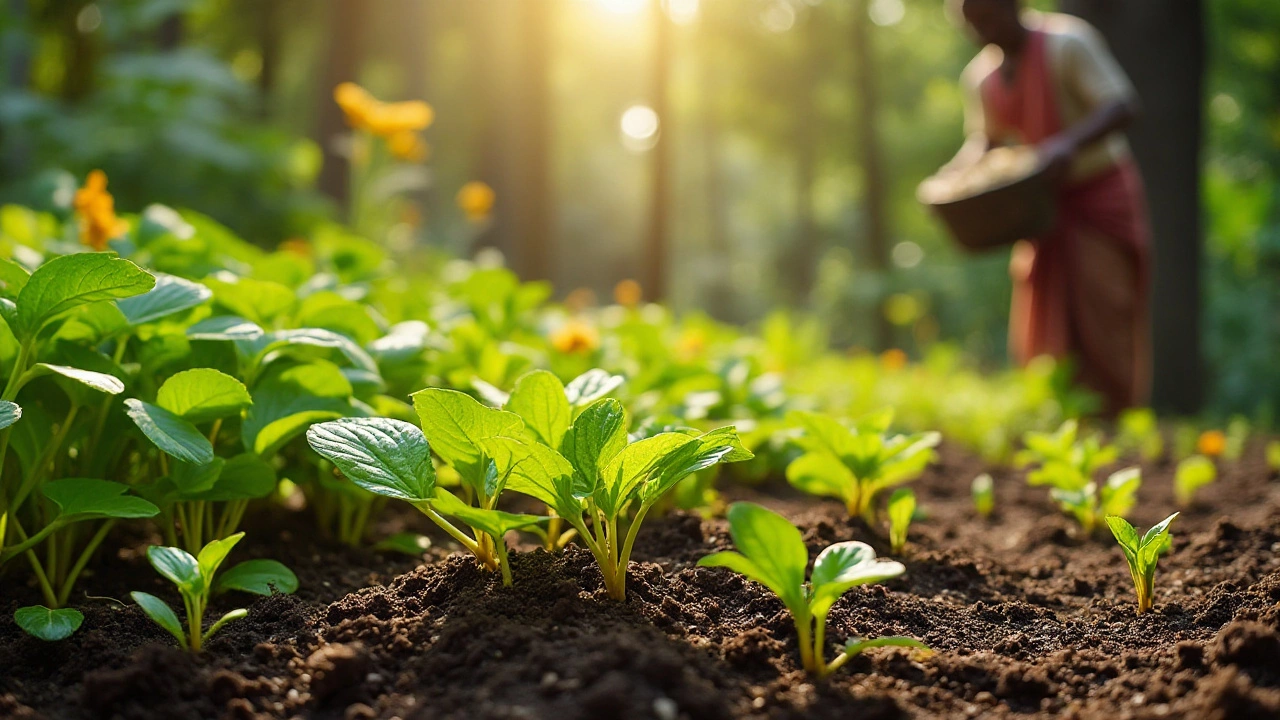Rehab Soil: Why Restoring Ground Matters
When working with rehab soil, the process of restoring degraded soil to a productive state. Also known as soil rehabilitation, it plays a key role in sustainable agriculture and garden health. Healthy soil is the foundation for any crop, whether you grow veggies on a balcony or manage a farm field. Without a solid base, plants struggle, water runs off, and nutrients are wasted.
Practices like no‑till gardening, a method that avoids soil disturbance have proven effective for rehab soil because they keep soil structure intact and protect the web of microbes underneath. When you skip the till, you also reduce erosion, which means more organic matter stays where it belongs. Managing soil moisture, the water content available to plants is essential; too little dries roots, too much drowns them. Adding organic soil amendment, materials such as compost or biochar that improve texture and fertility boosts the soil’s ability to hold water and nutrients.
Key Elements of Soil Rehabilitation
Rehab soil isn’t just a buzzword; it’s a set of actions you can start today. First, assess the current condition: look for compaction, discoloration, or a thin top layer. A simple squeeze test tells you about moisture—if the soil forms a ball and cracks, it’s too dry; if it sticks together and feels slick, it’s overly wet. Next, introduce organic matter. Compost, leaf litter, and even kitchen scraps break down into humus, which acts like a sponge for water and a food source for microbes.
Second, protect the ground with mulches or cover crops. Mulch reduces surface temperature swings and keeps rain from splashing soil particles off. Cover crops such as legumes add nitrogen back into the system while their roots create channels for water to move deeper. Third, avoid chemical shortcuts. Synthetic fertilizers can temporarily boost growth but often harm the microbial community that makes rehab soil sustainable in the long run.
Fourth, incorporate mycorrhizal inoculants if you’re dealing with heavily degraded land. These fungi form symbiotic relationships with plant roots, extending the reach of the root system and improving nutrient uptake. When you combine mycorrhizae with no‑till methods, the result is a robust, resilient soil that recovers faster after stress events like drought.
Fifth, practice diversified planting. Growing a mix of species with different root depths ensures that nutrients are drawn from various soil layers, preventing depletion. A diverse garden also supports a wider range of beneficial insects, which in turn help break down organic matter and keep pests in check. This biodiversity loop is at the heart of sustainable agriculture and makes rehab soil a living, breathing system.
Another often‑overlooked factor is pH balance. Most plants thrive in slightly acidic to neutral soils (pH 6‑7). If the soil is too acidic, lime can raise the pH; if it’s too alkaline, sulfur or organic acids can bring it down. Regular testing with a simple kit helps you keep the chemistry in the sweet spot, ensuring that nutrients remain available.
Rehab soil also benefits from proper drainage design. Raised beds, swales, or contour planting can direct excess water away from root zones, preventing water‑logging. At the same time, rain gardens capture runoff and feed it slowly back into the soil, improving both water use efficiency and groundwater recharge.
Finally, monitor progress. Take notes on plant vigor, yield, and any signs of disease. Over a season, you’ll notice improvements in texture, color, and smell—a richer, earthier scent signals a thriving microbial community. The more data you gather, the better you can tweak your approach and keep the soil on an upward trajectory.
Understanding the connections—how no‑till gardening influences soil structure, how moisture management supports microbial life, and how organic amendments feed both plants and soil—gives you a clear roadmap. Below you’ll find a curated list of articles that dive deeper into each of these topics, from daily watering myths to rehydrating hard soil fast. Use them as practical guides to turn your tired plot into a vibrant, productive ecosystem.
Guide to Restoring and Improving Soil in Garden Beds
Restoring soil in a garden bed to its optimal condition can usher in vibrant growth and flourishing plants. There are several strategies to help rejuvenate tired soil, from improving its nutritional content to enhancing its structure. With practical techniques such as adding organic matter, practicing crop rotation, and ensuring proper drainage, gardeners can revitalize their plots. Cultivating healthy soil involves understanding the symbiotic roles of microorganisms and plant life. This article delves into actionable steps and insights to rejuvenate your garden soil.
- manufacturing
- India
- food processing
- garden tips
- rice cultivation
- government schemes
- balcony garden
- urban gardening
- balcony gardening
- profitable business
- business ideas
- plastic manufacturing
- drip irrigation
- plant care
- steel manufacturing
- sustainable gardening
- startup ideas
- steel industry
- flower gardening
- textile manufacturers






